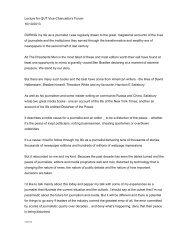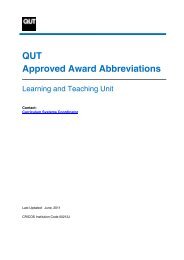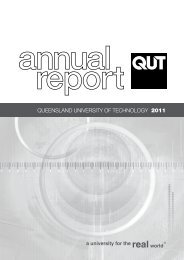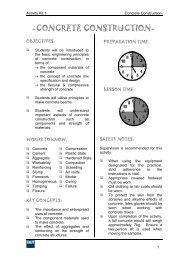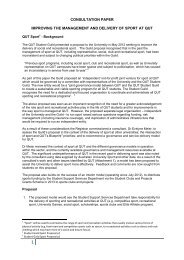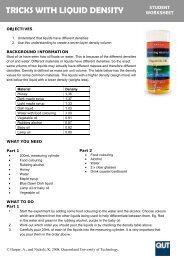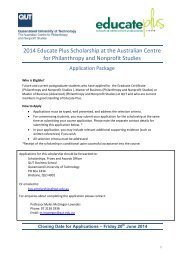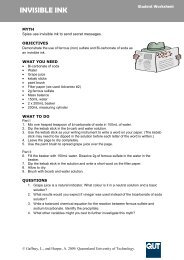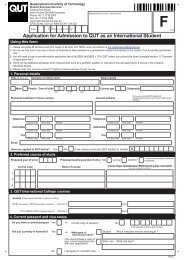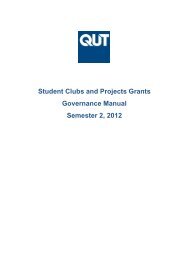EEP201 Fundamentals of Power System Earthing - QUT
EEP201 Fundamentals of Power System Earthing - QUT
EEP201 Fundamentals of Power System Earthing - QUT
You also want an ePaper? Increase the reach of your titles
YUMPU automatically turns print PDFs into web optimized ePapers that Google loves.
Student Comments"Presenters were excellent - very knowledgable. A lot <strong>of</strong> work covered in a very shorttime." Western <strong>Power</strong>, WAEEP204 <strong>Power</strong> <strong>System</strong> Load Flow Analysis• p.u. revision.• Data collection methods.• Load flow algorithms: convergence criteria, multiple solutions, starting values,ordering and sparcity <strong>of</strong> matrices.• Single and three-phase models: transformers, tap changers, overheadtransmission lines, underground cables, capacitors and• filters, controlled reactive devices, generators and motors, load representation.• Load flow applications: base case and contingency analysis in planningaugmentation options, system operations contingency analysis.• Load flow analysis methodology--use <strong>of</strong> load forecasts, establishment <strong>of</strong> "basecase".• Practice in analysis <strong>of</strong> transmission and distribution systems using an interactivepackage.Student Comments"Well organised unit. Lectures were well prepared and informative." <strong>Power</strong>linkQueenslandEEP205 <strong>Power</strong> <strong>System</strong> Fault Calculations• Representation <strong>of</strong> generators, lines, transformers in positive sequence equivalentcircuits.• Balanced fault analysis.• Selection <strong>of</strong> source voltages from pre-fault conditions. Unbalanced faultconditions.• Complete sequence representation <strong>of</strong> power system equipment: transformers,cables and lines (including mutual coupling <strong>of</strong> parallel lines).• Per unit positive, negative and zero sequence network diagrams.• Calculation <strong>of</strong> generator and transformer sequence equivalent circuits frommanufacturer's test data.• Calculation <strong>of</strong> line sequence impedance's from line layout and soil resistivity -inclusion <strong>of</strong> tower foot resistances in zero sequence models.• Residual currents in untransposed lines.• Interference with telecommunications circuits.• Short circuit calculations to AS3581 using an interactive computer package.Recommended Prior Study: EEP204Student Comments



